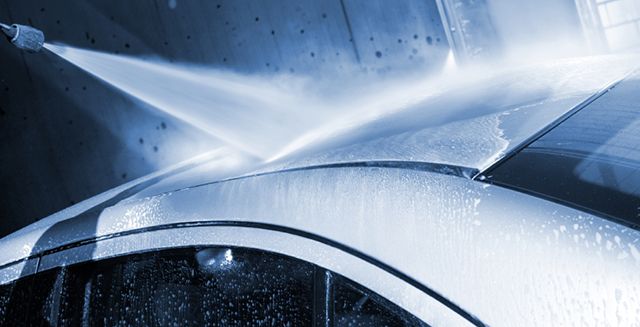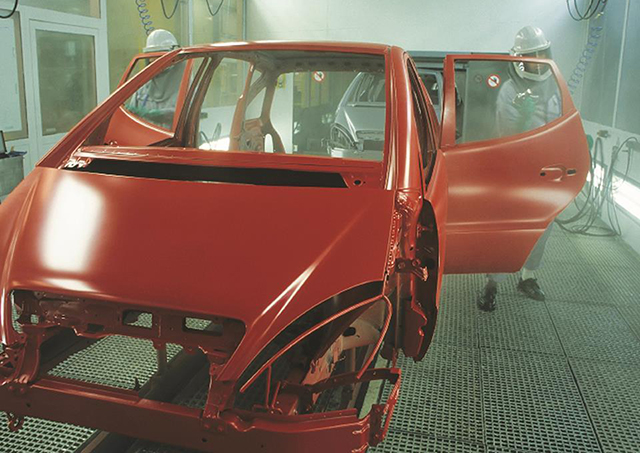The Pros and Cons of Space Saver Stairs
 Space saver stairs are becoming more and more popular. Also known as alternating tread staircases, loft stairs or paddle stairs, they can provide a convenient way of reaching an attic or basement where a standard staircase wouldn’t fit.
Space saver stairs are becoming more and more popular. Also known as alternating tread staircases, loft stairs or paddle stairs, they can provide a convenient way of reaching an attic or basement where a standard staircase wouldn’t fit.
The stairs are so compact because they are designed with alternate handed steps, effectively halving the number of treads required – so the overall footprint of the staircase is much smaller than normal stairs. They can, however, take a bit of getting used to. So, are space saver stairs worth having? Let’s look at some of their best and worst aspects.
Advantages of space saver stairs
Convenience – Anyone who has ever wrestled with folding loft steps will appreciate being able to simply walk up a set of permanent stairs when they need something from the attic.
Safety – As a fixed structure, space saver stairs are much sturdier than any ladder. That said, the design needs to be right. As each step takes more strain than the average staircase (due to the steep pitch), the treads should ideally be at least 32mm thick and made from a strong timber such as oak or ash. Pine and similar softwoods are liable to crack so should not be used. Slip-resistant surfaces for the treads are essential. You will also need a robust handrail, preferably on both sides. Provided all these conditions are met, there is no need to worry about safety.
Style – These stairs are available in a wide range of designs and materials, so you can choose one to suit your home’s character and décor. The cut-away steps are considered by many to be an attractive design feature – and you can even paint or stain them different colours for extra effect.
Cost – As there are fewer treads in space saver staircases they almost always cost less to produce than standard stairs, making them an economical option for home owners on a budget.
Drawbacks of space saver stairs
Restricted use – These types of stairs are not intended for use as a main staircase, but are only suitable for access to a single room such as an attic or cellar.
Unusual design – It can take a little while to get to grips with the alternate tread arrangement, as you only place one foot on each step. Some people find it easier to start off on their left foot rather than their right, and vice versa. Many stair manufacturers are able to accommodate individual preference, and arrange the steps accordingly.
Pitch – Obviously, these staircases have to be steeper than standard stairs otherwise they would not have a reduced footprint. This does make them a little harder to climb than normal stairs, which is why strong handrails are particularly important with this type of design.
What about building regulations?
Legal requirements are frequently interpreted differently according to where you live, so always check with your local building control officer before ordering a staircase. The main points to remember are: The stairs should only lead to one room; they cannot be used as the main staircase; they must be straight; you must fit a handrail where the drop is greater than 60cm; the maximum pitch (steepness) permitted is 42 degrees; and you need to allow a minimum head room of 1.9m.
To sum up…
Space saver stairs can be a stylish and practical option, but you need to do your homework thoroughly first. Measure carefully to check you have enough room, speak to staircase designers and consult your local building control officer before committing to a purchase.
Car Washing: Spic and Span – Inside and Out
Regularly washing the exterior of your car will not only make it stand out as shiny and sleek, but it will also help ensure its longevity. A clean car protects against dirt, salt and other contaminants picked up from the road every day. Anyone who lives in an area with harsh winters can attest what the crud can do to a car’s body- rust! Washing your car several times per month, or even once a week, can keep your car’s body in tip-top shape. Here are some tips for washing your car inside and out. Find out the car care products listed at Detailcentral.com.au, I believe they have what you are looking for.
While a warm, bright sunny day may make your car scream, “Wash me!” contrary to popular belief that really is not the best time to wash your car. Why not, you ask? If a car is not kept cool while suds up, the water can evaporate rather quickly, leaving soap spots. So, your best bet is to wash the car on a cloudy day, or at least in the shade on a sunny day.
Before you start washing your car, you will want to gather all the necessary supplies. You’ll need access to water- usually through a garden hose or pressure washer, a bucket, soap, sponges or soft cloths, scrub brush, glass cleaner, paper towels (or newspapers) and any other cleaning materials you may wish to use. For example, polish, bug cleaner for headlines and windshields, tire cleaner or degreaser, etc. Once you have everything together, fill up the bucket with soap and water, making it really sudsy. Be sure to use a soap that is made to wash cars- shampoo and dish soap really won’t do the job.

Begin with the wheels. It is important to have clean wheels because they are in constant contact with the road, and can be prone to corrosion caused by brake dust. You are riding on your tires, and your safety depends on them. Be sure they are clean! You’ll want to use lots of soapy water and a scrub brush to get them clean. You may also need to use a degreaser. You may need to use some good ‘ole elbow grease to get down deep in the tread to get all the dirt and debris. Once clean, rinse them good. Then, you can also use polish your tires and wheel covers to give a finishing touch.
Next, start on the car itself. Start by hosing down the car to get the surface wet. Then, start with small sections at a time so you can pay close attention to detail. For example, you may want to start on the back left, and clean that area from top to bottom. Then, rinse and move toward the center of your car, working your way all the way around. For the car’s body, you’ll want to use something soft so that the paint job can be protected. This can be a range of materials from large sponges, soft chenille pads, wash mitts and even a sea sponge. During this process, you may alternate from the soft sponge to a scrub brush for the grill area to remove bugs. After you are done with all sides, give the car a final rinse.
Next, although the windshield and windows are all probably shining from the good washing, you may want to take another step to make them shine even more and use a glass polish to clean them. Paper towels work fine, but for a more polished look, try ‘recycling’ your newspapers as a window cleaning rag. They work wonderfully, and leave no lint behind like some paper towels do!
Next, you can wax/polish your car. This will rally help protect your car from the elements like dirt, road salt, pollutions and other debris. You can actually wash your car with a pre-wax treatment to prepare for this step. Apply the wax to one panel section at a time using a dry cloth. After the wax dries, you can buff it with a towel. One coat is enough to make it shine- but heck, you can add another coat or two of you want to make it really shine! The wax job can last about two months.
While the interior really doesn’t help maintain the car itself, it’s just nice to have a clean car inside out. After you are done washing and waxing, start by vacuuming the floors, mats and seats. You may need to use the attachments to be able to get in all the nooks and crannies. (Crumbs are everywhere!) If you have rubber mats, those can be washed along with the exterior and laid out to dry. Replace them after the car is cleaned inside. Next, wipe down all the interior surfaces with a damp cloth. Then, just like you did the outside windows, do the same for the inside. Some people like to use a polish to make the dashboard shine. Just don’t polish the steering wheel! It’ll make it slippery.
Michael Walker is a freelance author providing tips and hints on engine related topics such as JDM engines [http://www.enginestar.com/], used Honda engines [http://www.enginestar.com/used-honda-engines.html] and used Nissan engines [http://www.enginestar.com/used-nissan-engines.html]. His articles are a valuable source of information for the auto enthusiast.
Article Source: http://EzineArticles.com/expert/Michael_Walker/44502
Article Source: http://EzineArticles.com/46442
How Much Does It Cost To Paint A Car?
These days there is something you can do rectify this situation. A new paint job works wonders but when you start looking around for an auto paint shop you realise that the cost to paint a car can be prohibitively expensive depending on what needs to be done. Or it can be relatively cheap but remember that old adage – you get what you pay for. There is a big variation in the quality and level of workmanship out there and all these factors directly influence how much it will cost to paint a car. Nxtzen.com ceramic coating Perth is all about protecting your vehicles precious paint finish from stone chips, scrapes and abrasion.
Decisions That Influence The Cost Of Painting Your Car
The first order of the day is to decide what sort of quality and end result you are looking for in the finished product. Do you want a high-end paint job complete with customised airbrush artwork and two-tone metallic paint using top of the range paint? Or are you just looking for a good basic repaint using good quality, durable paint that will stand the test of time, at least for a few years. Your answer to this question will determine whether you look for a specialty high-end paint shop or one of the more middle of the road ones and whether it’s going to cost you a small fortune or somewhere in the vicinity of $1000 to $5000.
Secondly, can you do any of the preparation work yourself? Before any car can be successfully repainted there is a fair amount of prep work involved and this is where a lot of the expense is incurred. If you have the time, the skills, the tools and the knowledge to do some of this work yourself you could save yourself quite a bit of money. If not, don’t even attempt it because you may just create a mess that will cost you more money to have fixed.

What Contributes To The Cost To Paint A Car
Most of the costs involved in repainting a car can be narrowed down to two main components – the quality of the paint and the amount of prep work that needs to be done.
Paint Quality
Auto paint varies hugely in quality and cost so you really need to ask each repair shop what quality paint they use. At the top end of the scale are the expensive ones that usually have reduced chipping and peeling qualities, are very durable, don’t fade as quickly and will withstand the elements for a good number of years. These types of paints can cost several hundred dollars a quart and usually come with a lifetime warranty.
More economical auto paints, such as those used by many of the middle range auto shops, still offer excellent value and quality for money. They’re durable, have a reasonable life span on the vehicle, can withstand normal wear and tear and generally come with at least a few years guarantee.
At the bottom end are the cheap paints. These types of paints are rarely guaranteed to last, will chip and peel easily and fade relatively quickly. However, they’re super cheap in comparison to better quality paints and may ‘do’ the job if you’re just looking to smarten the car up for resale.
Preparation Work
This is the other big expense involved in the cost to paint a car. The old paint has to be sanded back from the entire area being painted, which in a total repaint job is the whole exterior of the car at least. Dents, bumps, rust and scratches have to be fixed before the new paint can be applied and this is labour intensive, time consuming work.
Things on the car like the windows, mirrors, lights, trim, door handles, bumpers, antennas, tyres and spoilers also need to be removed or masked to avoid over spray damage. The more upmarket paint shops will often remove what can be removed to give a cleaner, more professional finish and only mask what they can’t remove. Again, this is time-consuming work and so the costs mount up. Discount paint shops may cut costs here by simply masking everything rather than removing, resulting in a less professional look.
So the bottom line here is that if a good, clean, professional looking finish is what you’re looking for, choose a quality painter.
General Price Ranges For Painting A Car
A bargain basement paint job can cost as little as a few hundred dollars – anywhere from $300 to $900. However, the paint will inevitably be generic, cheap synthetic enamel and there will only be a minimum number of coats applied. Some areas of the car, like under the hood and inside the doorjambs, may not be painted at all and protected areas will have likely just been masked rather than removed. Dents and damage to the panelling will probably simply be painted over rather than repaired first.
A better quality job will set you back somewhere between $1,000 to $2,500 depending on make and model of the vehicle, its condition and how much needs to be painted. The paint will be higher quality, usually brand named and there will be enough coats laid to create a quality finish, including several clear coats at the end to protect the coloured paint and produce a glossy, smooth finish. More care and attention will be paid to protecting areas that aren’t to be sprayed and to repairing panels prior to painting.
Right at the top end is the ‘show-room quality’ auto paint job, costing anywhere from $2,500 upwards depending on the model and make, vehicle condition and how much you want done. The vehicle will be prepped to within an inch of its life, including a complete sand back to bare metal. Every dent, scratch and bit of rust will be repaired if required and everything that isn’t to be painted that can be removed will be removed. Up to 18 to 20 layers of high quality professional brand name paint will be applied with another 6 to 8 clear coats applied over the top and you can expect the entire process to take a month or more to complete.
Vicent Feldman is an Australian journalist specialized in writing rich, unique, relevant and interesting niche articles about the cost to paint a car.
Article Source: http://EzineArticles.com/expert/Vincent_Feldman/1394828
Article Source: http://EzineArticles.com/9189644
